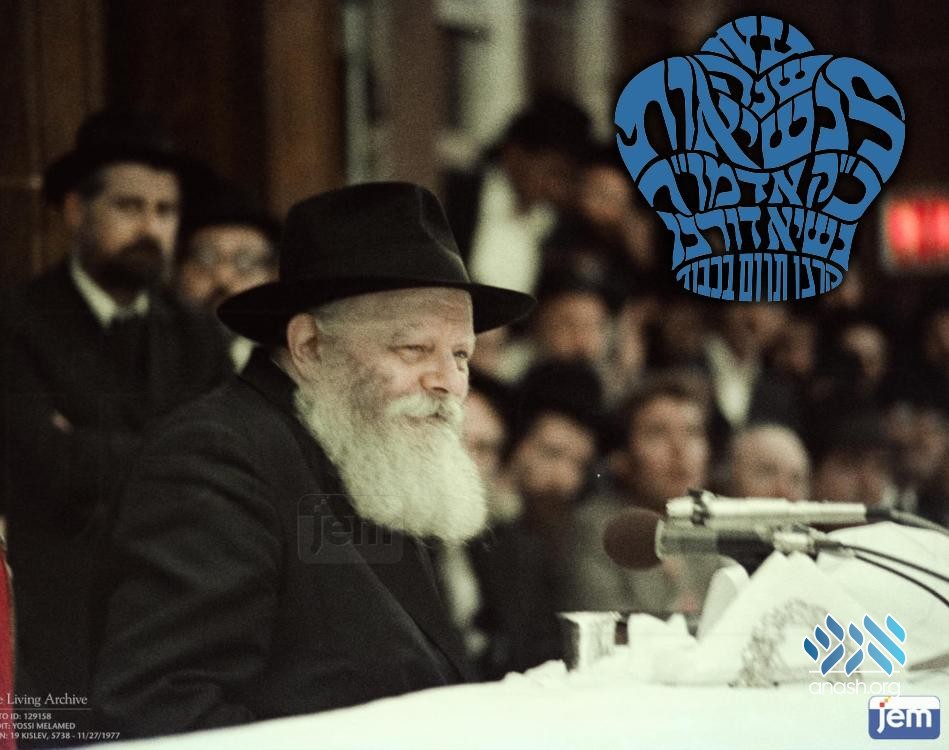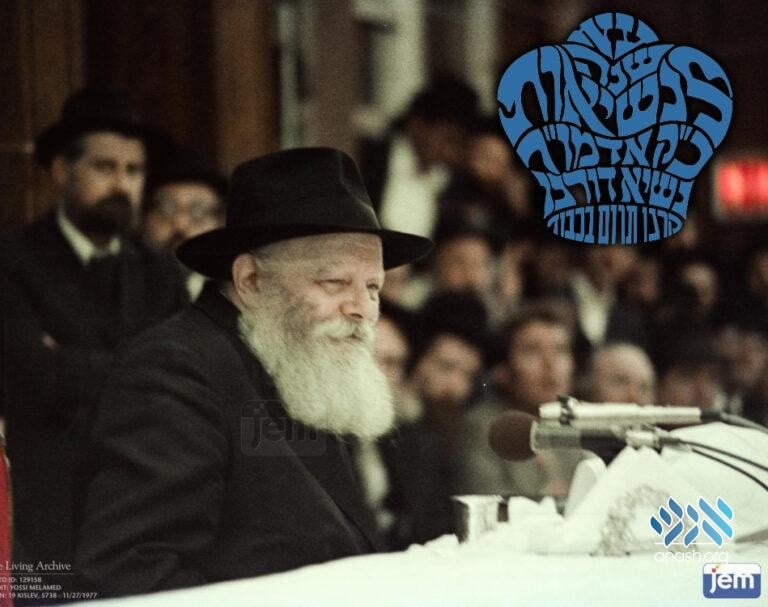י׳ שבט ה׳תשפ״א | January 22, 2021
Chassidim to Mark 71 Years of the Rebbe’s Leadership
On Yud Shevat, 5710, the Frierdiker Rebbe was nistalek. One year later, on Yud Shevat 5711, the Rebbe accepted the mantle of leadership. The day is marked annually with the customs the Rebbe established and with chassidishe farbrengens.

On Yud Shevat, 5710, the Frierdiker Rebbe was nistalek. One year later, on Yud Shevat 5711, the Rebbe accepted the mantle of leadership. The day is marked annually with the customs the Rebbe established and with chassidishe farbrengens.
By Anash.org writer
On Shabbos morning, Yud Shevat 5710 (1950), the Frierdiker Rebbe was nistalek. The Rebbe was overcome with grief. For a year following the histalkus, he refused the pleas of chassidim around the world to accept the mantle of leadership.
One year later, on Yud Shevat 5711 (1951), the Rebbe officially accepted the role of Rebbe by delivering a maamar at a farbrengen marking the first yahrtzeit of the Frierdiker Rebbe.
At that farbrengen, the Rebbe said (free translation):
“The three loves—love of Hashem, love of Torah and love of one’s fellow Yid—are one. One cannot differentiate between them, for they are of a single essence. If you see a person who has a love of Hashem but lacks a love of Torah and a love of his fellow, you must tell him that his love of Hashem is incomplete. And if you see a person who has only a love for his fellow, you must strive to bring him to a love of Torah and a love of Hashem.
“When we will have the three loves together, we will achieve the geula. For just as this last galus was caused by a lack of brotherly love, so shall the final and immediate Redemption be achieved by ahavas yisroel.“
At that farbrengen, the Rebbe recited the maamar Basi L’gani, laying out the mission statement for dor hashvi’i: our generation has been entrusted with the task of fulfilling the purpose of creation by creating a dira btachtonim thereby drawing the shechina back down into this physical world. It is our generation that will bring moshiach.
Customs for Yud Shevat
In a letter written on Rosh Chodesh Shvat 5711, the Rebbe laid out the proper way for chassidim to observe the Frierdiker Rebbe’s yahrtzeit:
- On the Shabbos before the yahrtzeit, each chassid should receive an aliya. If there are not enough aliyos, the Torah should be read a number of times in different rooms.
- The most prominent member of the kehilla should be honored with Maftir. Alternatively, the choice can be made through a gorel.
- The kehilla should choose a separate shliach tzibur for each of the three minyanim over the day of the yahrtzeit.
- A yahrtzeit candle should stay lit for the entire twenty-four hours. If possible, it should be made of beeswax.
- Five candles should be lit throughout davening.
- After davening, the shliach tzibur should conclude the following selections from Mishna: Chapter 24 of Keilim and Chapter 7 of Mikvaos. He should then recite the Mishna “Rabbi Chananyah ben Akashya…,” followed silently by a few lines of Tanya and Kaddish deRabbanan.
- After maariv, part of the maamar Basi L’gani should be recited from memory. If there is no one who can do this ba’al peh, it should be recited from the text. This should be continued after shacharis, and the maamar should be concluded after mincha.
- Before shacharis and after mincha, a perek of Tanya should be studied.
- Tzedaka should be given before shacharis and mincha to causes associated with the Frierdiker Rebbe. Donations should be made on behalf of oneself and each member of one’s family.
- After shacharis and the recitation of Basi L’gani, each individual should read a pidyon nefesh. Those who have had the privilege of entering yechidus with the Frierdiker Rebbe, or of seeing his face, should envision himself as standing before him. The pa”n should then be placed between the pages of a maamar or another one of the Frierdiker Rebbe’s teachings, and sent to be read at the Ohel.
- Over the course of the day one should study the chapters of Mishna that begin with the letters of the Frierdiker Rebbe’s name.
- One should participate in a farbrengen on Yud Shvat.
- One should set aside time to tell his family about the Frierdiker Rebbe, and the avoda that he focused on throughout his life.
- Those who are suited to the task should speak at shuls and batei midrash in their cities and cite a teaching of the Frierdiker Rebbe. They should speak about how he loved every Yid, and they should make known the practice of learning chitas every day. If possible, this should be done through a farbrengen.
- Those suited to the task should visit center of frum and not yet frum youth, and explain to them the great love that the Frierdiker Rebbe had for them. They should be told what the Frierdiker Rebbe expected of them, and the trust he placed in them that they would fulfill their task of strengthening Yiddishkeit with the energy, warmth and vitality of the young.
Click here to download the ma’amrim of Basi Legani that correspond to this year.
To download the ma’amarim translated by Simply Chassidus, click here.
To download a Basi Legani study pamphlet by Chayenu, click here.
VIDEO: The story of Yud Shevat


Send us your feedback